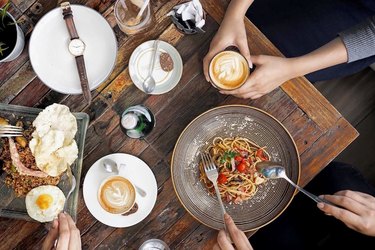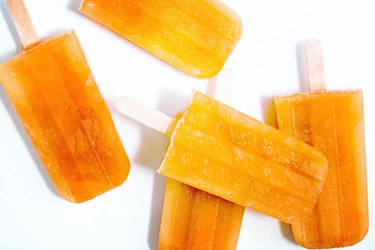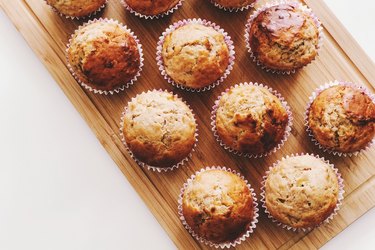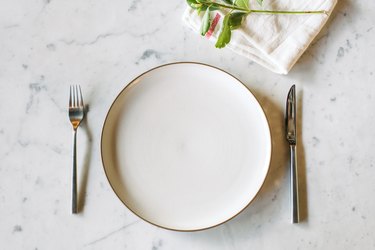
If you're looking to drop pounds, don't believe your eyes when it comes to serving size. Why?
"A lot of people have grown up with really big serving sizes, and that's what they're comfortable seeing," says Emily O'Neil, RDN, LDN, a weight loss coach at the Austin Diagnostic Clinic in Austin, Texas.
The key to managing portion control is knowing the difference between portion size and serving size. Portion size is what you actually eat at a sitting, while serving size corresponds to a nutrition label measurement. It's important to pay attention to both numbers in order to get an accurate idea of how much you're consuming.
The next time you find yourself grabbing something sweet, salty, smooth or crunchy, remember the guidelines outlined below.
1. Make a Fist
When it comes to the stuff we label "junk" that lurks in the back of the pantry, Young says to stick to portions no bigger than 1 cup. Not sure what that looks like? Well, there's a great measuring tool right at your fingertips — literally. A one-cup serving is about as big as your fist, says Young.
At mealtime, Young suggests applying this same rule to the starch on your plate, whether that's rice, pasta or potatoes.
2. Stay Single

No, you don't have to break up with your beau to lose weight.
But Young does recommend paying a little bit more for pre-portioned, single-serve snack items such as chips, pretzels, nuts and ice cream (hello, Ben & Jerry's mini cups!) if you can.
"When I counsel families, I always recommend single-serve popsicles," says Young. "If you sit down with a pint of ice cream, all but the most disciplined among us will eat the entire thing."
3. Create Your Own Snack Pack
Even if a food is healthy, like nuts, it's important to remember that it has calories, says Young. And if you're trying to lose weight, calories count.
The solution? Invest in snack-size baggies and portion out single servings so they're ready when you need them.
"It's been shown that we eat more when we're presented with bigger portions," Young explains.
4. Bake It Down

There's nothing like homemade baked goods to bring out the kid in us. But it's all too easy to overindulge when presented with an entire cake. Instead, break out the muffin tin to bake your sweet treats.
Bonus: You don't have to limit the "tin trick" to dessert. It works for breakfast, too! Check out our roundup of 10 amazingly easy muffin-tin breakfasts.
5. Switch Your Spoon
Admit it — you use your oversized spoons for more than soup. Well, it's time to nix that habit, because according to Young, research shows we eat less if we use a teaspoon rather than a tablespoon. So, choose a smaller scooper whenever possible, and especially when it comes to calorie-rich treats like ice cream.
Another pro tip: Try swapping out your big serving spoons, too; using a mini version makes it harder to pile on big portions.
6. Pick Smaller Plates

The "spoon rule" holds true when it comes to the size of your plate.
"We see over and over again that people who eat dinner from 10-inch rather than 12-inch plates — and don't go back for seconds — have an easier time keeping portion sizes reasonable," Young says.
7. Nix Certain Foods If Necessary
Whether or not you can eat certain foods without overindulging might depend on how much hold they have on you, says Nicole Avena, PhD, a research neuroscientist, food addiction expert and author of Why Diets Fail.
"For some people, no amount of portion control is going to work. In those cases, I suggest abstinence," she says.
In other words, if you absolutely know that you're going to burn through an entire tin of honey-roasted cashews in 24 hours, don't put it in your shopping cart.
But don't mourn your favorites just yet. Once you get your cravings in check, you may be able to carefully add small amounts of these binge-triggering foods back into your diet to enjoy occasionally, Avena says.
8. Ask First

Young offers just one more suggestion: Before you even reach for that treat you're craving, ask yourself, "Am I really hungry?"
"It's so simple, but people often don't ask themselves that question before they dig in," she says. "At the end of the day, it's the simplest things that really make a difference."